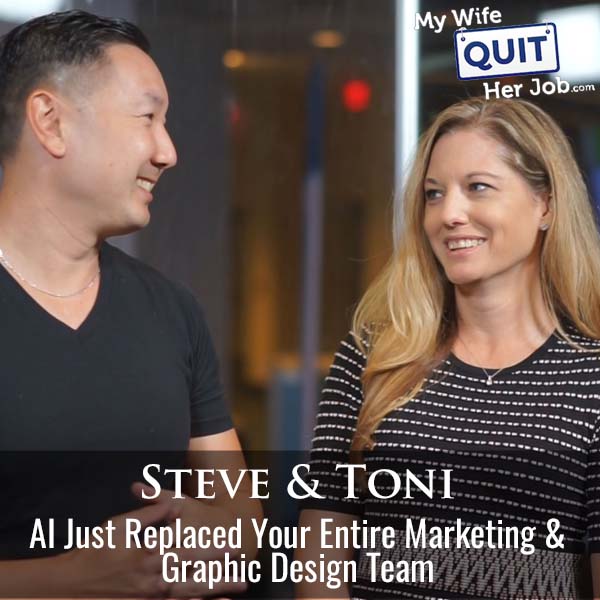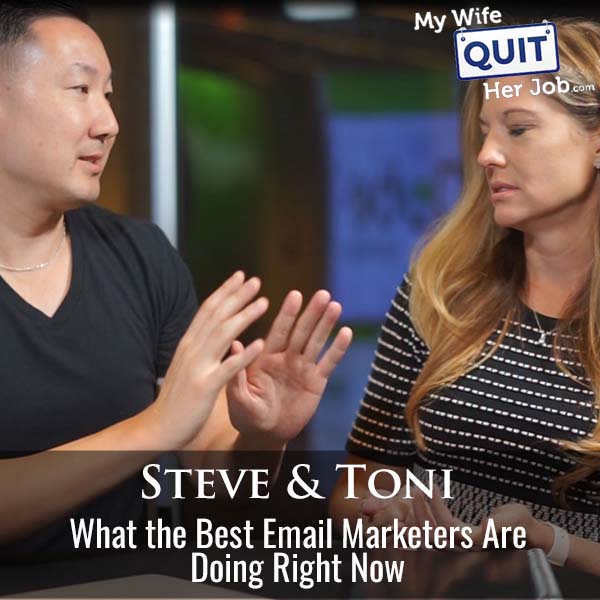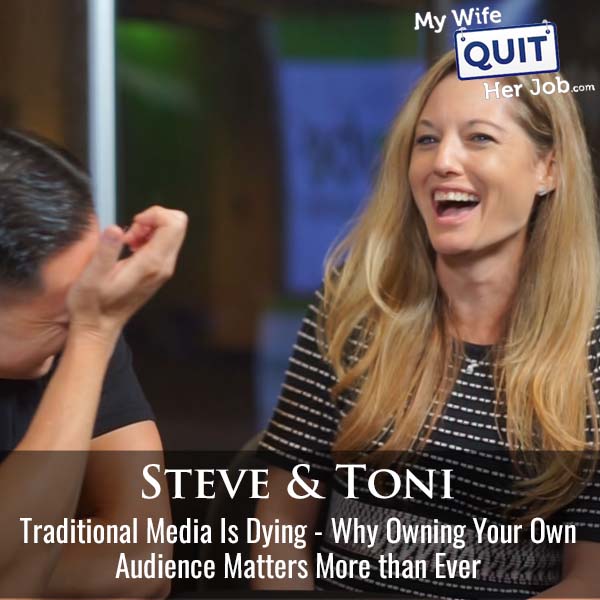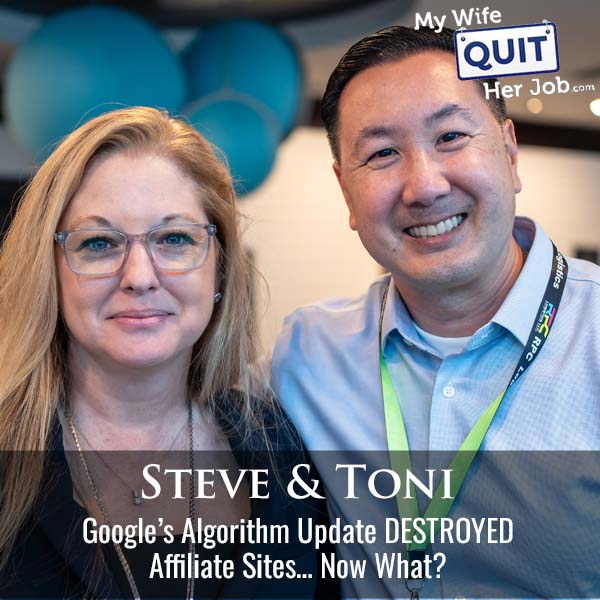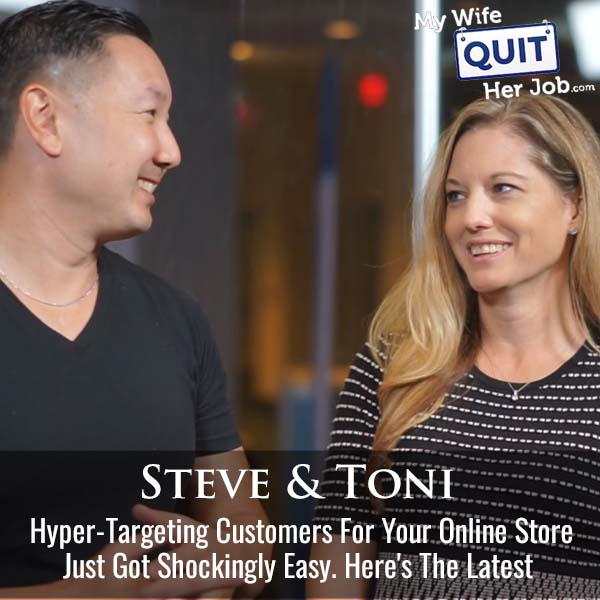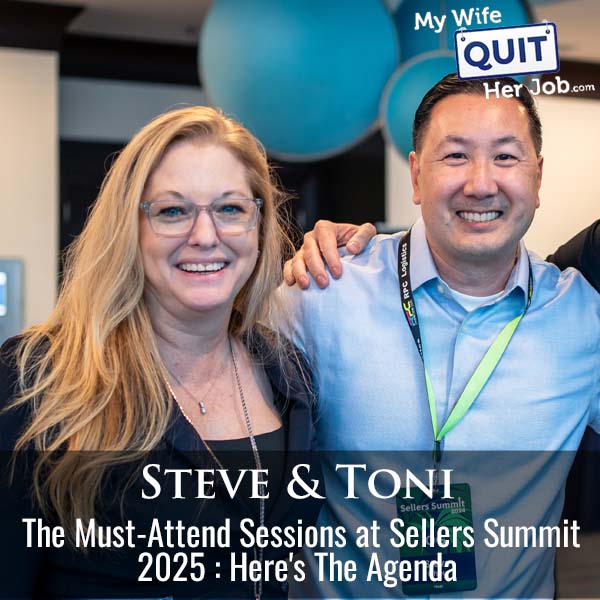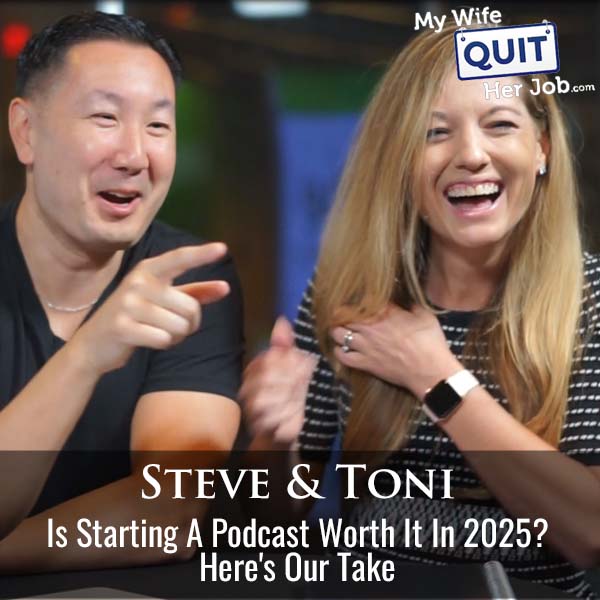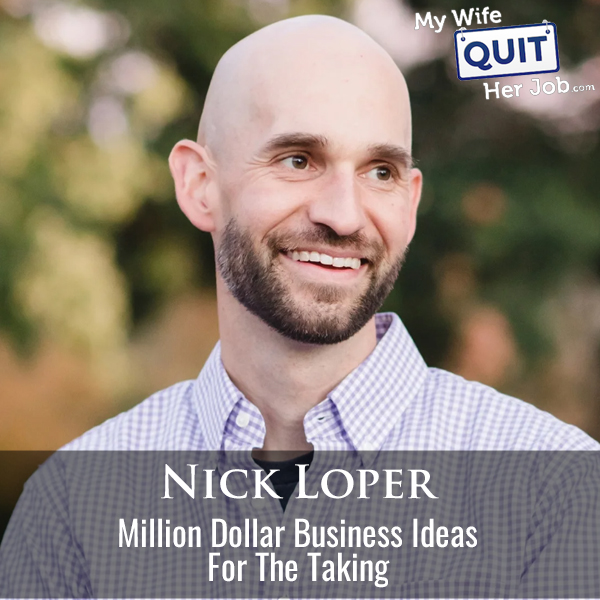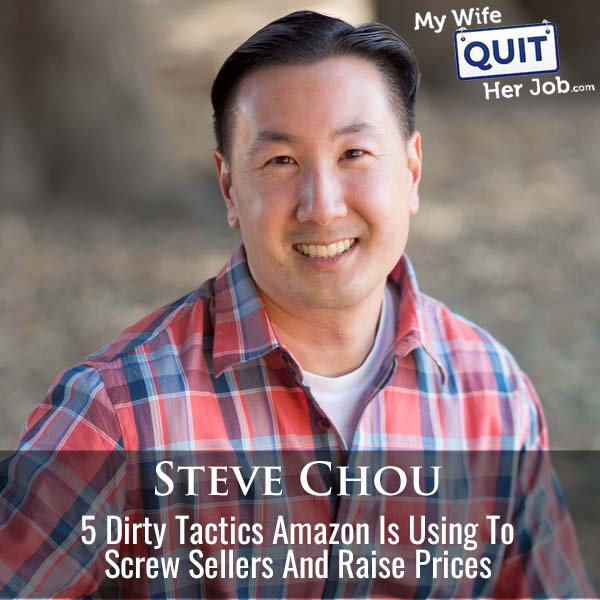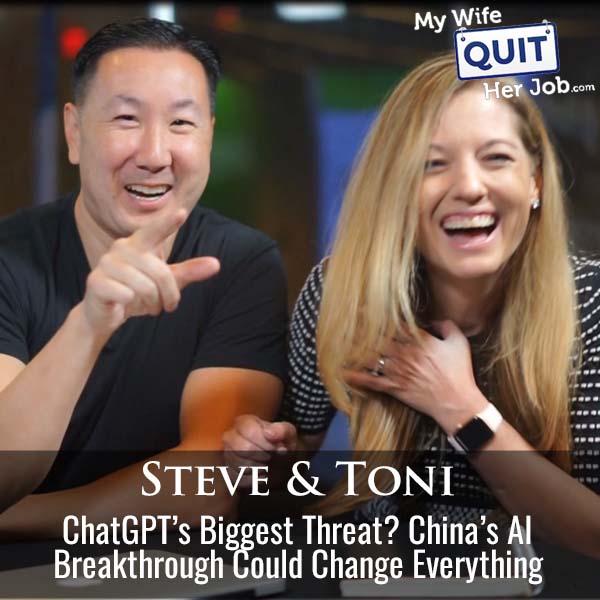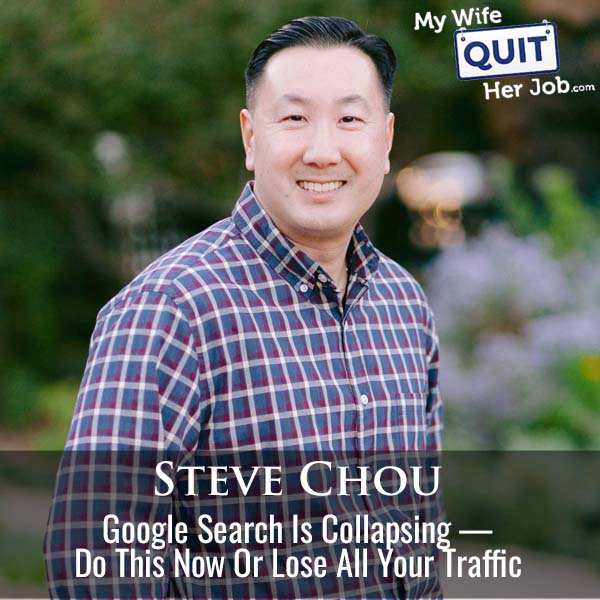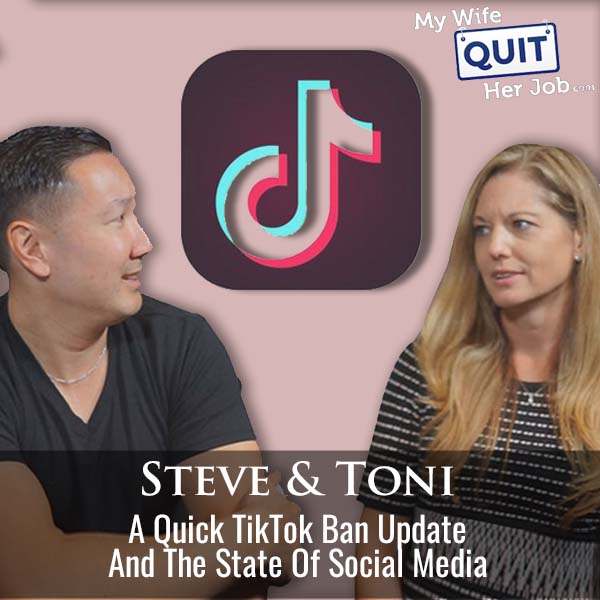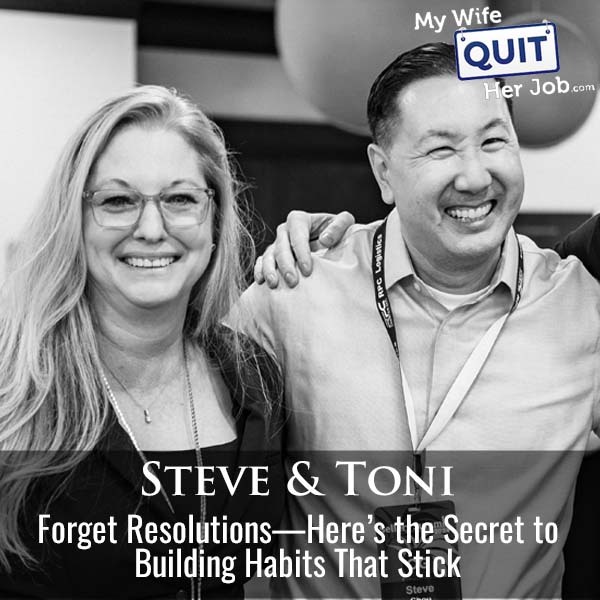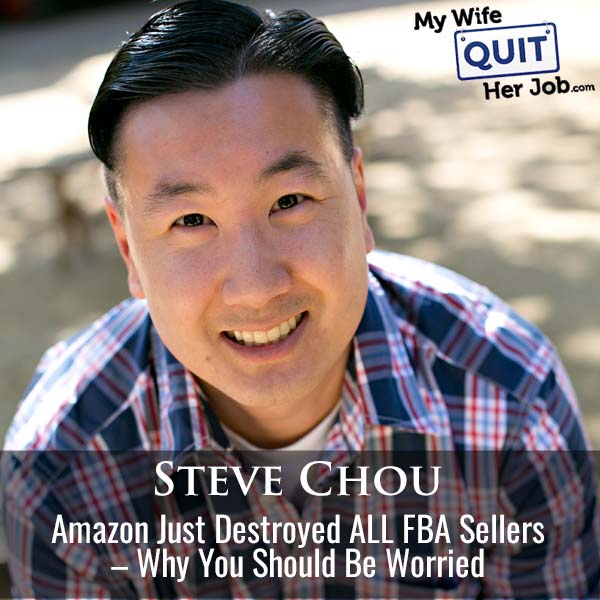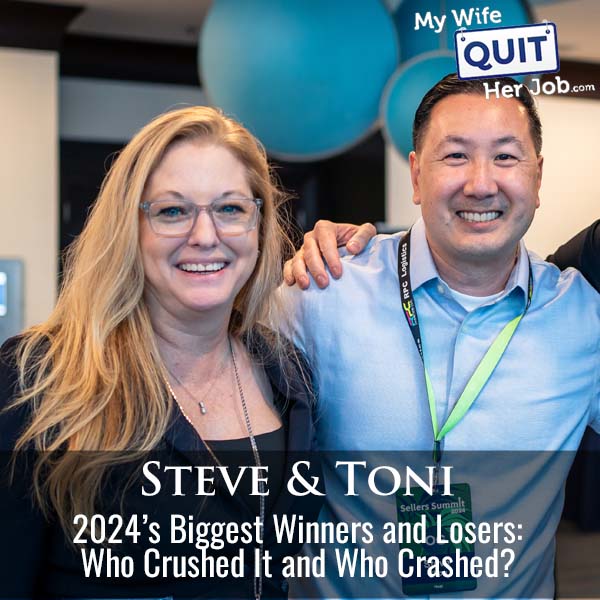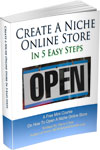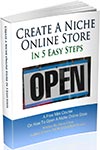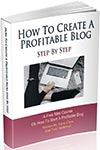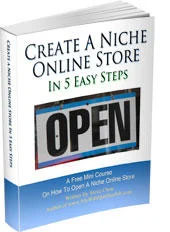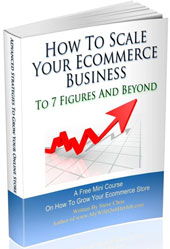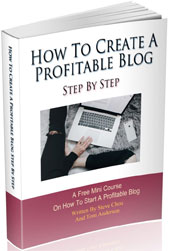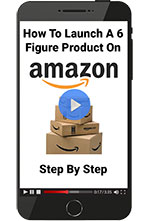Podcast: Download (Duration: 44:23 — 51.1MB)
In this episode, Toni and I dive into the latest AI image generation announcements from OpenAI and Google and how they are completely disrupting marketing agencies, graphic design and ecommerce overall.
What You’ll Learn
- OpenAI’s latest image gen release
- Why graphic designers are in trouble
- How to adapt to work alongside AI tools
Sponsors
SellersSummit.com – The Sellers Summit is the ecommerce conference that I’ve run for the past 8 years. It’s small and intimate and you’ll learn a ton! Click Here To Grab The Recordings.
The Family First Entrepreneur – Purchase my Wall Street Journal Bestselling book and receive $690 in free bonuses! Click here to redeem the bonuses
Transcript
Welcome back to the podcast, the show where I cover all of the latest strategies and current events related to e-commerce and online business. In this episode, Tony and I dive into the latest AI image generation announcements from OpenAI and Google and how they are completely disrupting marketing agencies, graphic design, and e-commerce overall. But before we begin, I wanted to let you know that tickets are now on sale for Seller Summit 2025 over at sellersummit.com and the prices are now going to go up every two weeks until the event starts. The Seller Summit,
00:29
is the conference that I hold every year that specifically targets e-commerce entrepreneurs selling physical products online. Unlike other events that focus on inspirational stories and high-level advice, mine is a curriculum-based conference where you will leave with practical and actionable strategies specifically for an e-commerce business. Every speaker I invite is deep in the trenches of their e-commerce business, entrepreneurs who are importing large quantities of physical goods, and not some high-level guys who are overseeing their companies at 50,000 feet.
00:59
I personally hate large events, so the Seller’s Summit is always small and intimate. Every year we cut off ticket sales at around 200 people, so tickets sell out fast, and we’ve sold out every single year for the past 8 years. If you are an ecommerce entrepreneur making more than $250,000 or $1 million per year, we also offer an exclusive mastermind experience with other top sellers. The Seller’s Summit is going to be held in Fort Lauderdale, Florida from May 6th to May 8th.
01:28
Right now, this is the cheapest the tickets will ever be. So head on over to sellersummit.com and grab your ticket. Now onto the show.
01:42
Welcome back to the My Wife, Quit or Job podcast. Today we’re talking about AI and specifically the latest releases that just happened with OpenAI and ChachiBT 4.0. I personally think it’s going to disrupt a lot of industries and I’m both excited and scared at the same time. Well, you’re not in the industry, so why be scared? Well, okay. So the reason why I’m excited is because
02:11
Now, as a business, I can greatly lower my budget for graphic design and that sort of thing. On the other hand, I have friends that do graphic design for a living, so that’s why I’m scared. I would like to just talk about this before we talk about all the ways that you’re using it. We were just chatting before we started recording and I said that I haven’t had this much luck and you told me it was user error.
02:38
I was looking at your prompts. There’s five words, right? Well, I had much more prompts before that. Okay. With the new AI tools with image generation, people are saying that this is going to put graphic designers out of business. But if you’re not a graphic designer, part of me feels like some of… If you’re a good graphic designer, one thing you bring to the table is the ability to convey emotion in your…
03:08
designs, right, to evoke feelings from people. And I’m just not sure that AI is, if you don’t have the ability as the importer, then I don’t know if AI is gonna give it back to you. Well, okay, so let’s just take a typical use case here. Let’s say you see a Facebook ad from the Facebook ads library that you really like. You would upload that to ChatGBT and say, hey, I want you to use this style with this product.
03:37
And then here are the value props, here are the whatever. I’ve been featured in these magazines, just put out something in this style and it will do it. And it does a pretty good job. So that’s how I’ve been using it. Yeah. And what’s nice is it literally, so we’ve been featured in Brides magazine, Martha Stewart weddings and real simple. I said, that was one of the things I wanted to insert in the ad. So it actually went out and grabbed those logos and put them on the ad. And then, know how
04:07
I’m not a graphic designer, obviously, but you know how graphic designers, know, they use different size fonts and whatever to make it look good. Yeah. ChachiBD did the same thing. And it looks just like the style of that other ad. Yeah. Except it was for my product. Now I did have to tweak a couple of things because like some of the text value props that I gave it were a little too long. So they were just kind of off center and like the call to action button wasn’t the color that I wanted. And you can iterate. Right. The problem right now is.
04:36
is because it just kind of got released, everyone’s using it right now. So unfortunately right now it literally takes like five minutes an image, which tries my patience right now. feel like it took even longer when I was working through stuff. But so let’s just say you get this graphic and there’s some text that needs to be shifting, there’s updates. Like what is the format of the graphic that, because all I did was go through it in ChatGPT. Like what if you want to make edits, then how do you do that?
05:03
I mean, the easiest way right now is to tell chat GBT to just edit it. Yeah. Right. But I didn’t have the patience for that right now. So I just threw it in the Photoshop and adjusted the things manually. Okay. Yeah. Yeah. But I mean, right now it’s slow because everyone’s using it. But once all the server, remember when chat GBT was like super slow when it first came out? Yes. It gets better. They’ll add servers and whatnot. And if it gets as fast as mid journey, like mid journey is like 30 seconds. Once it gets to that point,
05:32
I don’t think this is going to be a problem just giving additional prompts to get what you want. Also, Google Flash 2.0 is super fast. You can just take that Chat GPT ad, move it into Google now and say, want the model to be crying or I want the model to be smiling. And it’ll update that in like 30 seconds. I guess I feel like this is really good if you know what you want.
06:03
Yeah, I mean, isn’t everything in life better when you know what you want? Well, here’s the thing. I feel like a lot of people, and I see this a lot with e-commerce and a profitable audience, is that a lot of times people don’t really have a firm grasp of what they want. They have this very abstract level idea. That’s where I think the art-based people can help take very…
06:31
abstract concepts and make them come to life. So I feel like this is as good as the person using it, right? If you’re, I don’t think there’s any like, if you, I think if you’re not great at this, then you’re not going to get the results you want. I agree with that. But on the flip side, you can ask ChachiBT, give me some examples of great ad campaigns over the years for this type of product. And it’ll show you
06:59
Of course, if you’re going into this with no research and nothing, yeah, you’re gonna get crap in, crap out, right? But it’s really easy to find good examples of good ads, for example, that you can emulate. let’s say you have Canva, like even the free version of Canva, you can do a search for e-commerce templates, right? And then just feed those into ChatGPT and have it do all the work. Yeah. So I guess my concern
07:28
I think if you’re a good graphic designer, you’re fine. I agree. If you’re a mediocre, if you’re doing this on the side, you’re probably in trouble. I guess the one issue that I’ve noticed recently is my client started a YouTube channel, they’re using Claude specifically to basically turn blog content into scripts. The content’s pretty much already existing. It’s turning out some pretty good stuff for the most part. The other day, she
07:58
put in some content and she asked for a statistic. She was making a video on how to teach your kids to read. And because she’s coming out, the company is coming out with a reading curriculum and she asked for a hook and it was like the back and forth that people do. And Claude said, the hook was something like 80 % of parents are frustrated teaching their kids to read. And so she said, wow, that’s so interesting. Where did you get that statistic?
08:27
And Claude said, you caught me. I made it up. Well, that’s well known, Tony. You can’t trust any stat that comes out of course. But that’s that’s where I feel like I feel like how often is AI going to deceive you? Like, oh, these colors look good together when they don’t look good together. Like if you don’t have an eye for things, I feel like AI will get away with a lot of stuff, just like if she would have just taken that statistic as like, oh, 80 percent of parents, you know.
08:55
I mean, that was the wrong approach. If she wanted real statistics, she would have used a different version that actually does the deep research on it. Well, she didn’t ask for a statistic. It came up with it in the hook. This was part of the hook. Then she was like, huh, this seems high because she has the knowledge of this. If you don’t have any knowledge, I feel like you can be led astray pretty quickly. This is why I think the industry is in trouble. Sure, there’s people who are
09:25
ignorant, you know, who don’t know anything. Of course, there’s always going to be business for them. Right. But who employs most of these graphic designers that make a living doing this? It’s large corporations or bigger businesses who do know what they’re doing because they’re already making money to a certain extent. Right. Yeah. And I mean, this is just the beginning. mean, it’s going to take time for this to happen, and it’s only going to get better. Yeah. Like I just take mid journey, for example, like
09:53
When that first came out, I signed up and then I canceled because it was okay, but it was just kind of fun, a fun tool. Now I’m paying for it every month because it actually, up until the chat GPT came out, I thought mid-journey was the best and it’s, still is the best for certain applications. And again, of course you have to take the time to learn how to use these tools. And so I guess, yeah, from your perspective, if someone’s not willing to learn how to do this correctly, then of course.
10:22
you can pay someone and there’s always going to be people like that. I also feel like one of the things that I dislike about AI is I feel like it flooded the market with people who don’t really know anything but are using AI to create content, make videos, whatever. A lot of the information is wrong, misleading. I feel like the better AI gets, the more fake people we get trying to do these things, which I think
10:51
We heard, I don’t remember who told us this, we were at a conference a couple years ago and they were talking about understanding how to use AI as like the next skill, right? Being able to put in the right prompts, being able to talk to it correctly. And when I heard that, I was like, yeah, that makes total sense, right? But then over the past couple of years, especially when we do webinars or we’re talking about AI use cases,
11:17
And we share prompts like I shared a prompt at my talk last week. You share prompts and webinars. People are like, give me the prompt. Give me the prompt. Like people are like dying for that information. They want they want to learn how to do this better, because usually, like you said, garbage in garbage out. If you’re not putting the right prompts in, you’re probably not getting the best information. Yeah, I mean, that’s correct.
11:43
You know what I started doing now is once I get ChatGPT in a good place with what I wanted to do, I say, hey, take this conversation and then turn it into a prompt that I can ask you from now on. So I have to go through all this again. That’s smart though. And it works to a certain extent. Yeah. Here’s my long-term worry for all this. So
12:10
There was a friend who posted something on Facebook recently where they said that they just laid off 95 % of their engineering team because of AI. Really? So what’s going to happen going forward with artists and everything is as soon as you see there’s no jobs and no work in this field, less people are going to go into it. And at that point, know, chat, GBT and AI, it’s just derivative works.
12:40
off of what if humans have done. And if humans aren’t doing anything new and novel anymore, at some point it’s gonna get stagnant. It’s gonna take years to get to that point, but I think it’s just gonna pendulum back and forth.
12:52
Right? Like it’s going to get to this point where chat GPT or AI doesn’t know anything new because no one’s putting out any content on the blog anymore. Right? Right. And then at this point, every human who’s creating new stuff, they’re not going to want AI crawling their stuff. So they’re going to create these silos now of data where they charge AI for it. And this pendulum is just going to kind of swing back and forth. We’re right now on this disruption phase. Right. And it’ll probably take, I don’t know.
13:20
years for to get to that point. I don’t know, I’m already very frustrated to be honest with you on TikTok and YouTube. Like whenever I get a piece of AI video, I just stop watching. Like I can’t stand it. What type of AI content are you seeing on TikTok and YouTube? It’s mostly sports for me. Okay, yeah. But every now and then I get a like a personal development one. You know what saying?
13:49
I don’t get those, but tell me more. Maybe it’s because that’s my niche and I browse competitors and whatnot. It’s basically teaching you how to, if you’re stuck in a rut or whatnot, the mindset you have to get. I’m not going to watch an AI video for that. Although there are YouTube channels like Motiversity where they have millions of subs and it is all AI generated. Who am I to know what works in that department? My question would be,
14:19
For personal development, once again, it’s sort of the pendulum, right? The AI can have the information right now because there’s millions of pieces of information on personal development on the web. But in 10 years, where is that information going to be?
14:36
I mean, to be honest with you, think personal development information was way saturated like 10 years ago, right? I mean, it’s the same stuff. I feel like there’s new stuff. There’s new stuff, but I watch personal development stuff based on the person who’s giving it because that person needs credibility. Correct. Right? And so if I see a robot or an AI person doing it, it means nothing to me. I would never take personal development.
15:04
from a robot other than you. You’re the only robot I take personal development. Because it’s just some kid probably. Correct. Just a script kitty. Yep. Pumping all this stuff out. Yeah. Yeah. So one thing that I’m glad about and this is, so I go back and forth, right? Because I don’t want to put people out of jobs. Obviously, I have a lot of friends who are graphic designers too.
15:33
Also, I feel like there’s a lot of jobs being done that are so useless. For example, we ran a giveaway and in the giveaway, one of the entries was like, what content do you want to see on YouTube? What content do want me to create? We got over thousand entries. Whoever set up the contest, wasn’t me, decided not to make that a multiple choice, but rather a fill in the blank, which is great until you have to parse the data. Then it’s like,
16:03
You could have 15 of the exact same answer, because it’s nuanced in a sentence, it’s not like, you know, coming together. So the company paid somebody like, I don’t know, 25 bucks, 30 bucks an hour to like organize this data for several hours. And I was like, you did what? Like what? And then they didn’t really organize it in the correct way. It was like this whole big mess, right? Waste of money.
16:24
I took the spreadsheet, uploaded it to ChatGBT and I was like, organize this by category and frequency, right? So like how many times you had the word high school or whatever. And then like ChatGBT gave me like draft one. And then I was like, okay, now organ, like then I kept parsing it down realizing like, okay, let’s look for these keywords and these keywords. And within 10 minutes, I had, you know, a thousand pieces of information organized pretty well. Like I think it could probably be a little bit better.
16:52
I spent 10 minutes doing this with not- I didn’t really know how to do it. I’d never done this before. I’d never asked for a spreadsheet organization from Chagy Pt. versus the three and a half hours someone else did it where they didn’t even really organize it in the right way. I think those types of uses to me are really exciting because that’s just busy work. That’s not skilled labor, I guess. In my first job out of college,
17:22
I was doing board design and there was one lady, her only job was to take a data sheet for like a chip, draw a picture of it so someone could place it in a schematic tool. That was her job. And it was something that anyone could have done or like any software program, like if they just took the time to write it, could have done so.
17:51
You’re right. mean, there’s lots of stuff like that. And I guess I’m not worried for the graphic designers and artists who are the best in their field. There’s always room for people who are the best in their field. Same with engineering and whatnot. But I mean, the vast majority, like 80%, are not the top, right?
18:13
I just wanted to take a moment to tell you about a free resource that I offer on my website that you may not be aware of. If you are interested in starting your own online store, I put together a comprehensive six day mini course on how to get started in ecommerce that you should all check out. It contains both video and text based tutorials that go over the entire process of finding products to sell all the way to getting your first sales online. Now this course is free and can be attained at mywifequitterjob.com slash free.
18:42
just sign up right there on the front page via email and I’ll send you the course right away. Once again, that’s mywifequitterjob.com slash free. Now back to the show.
18:53
I would say the people who are in trouble are the people who learned Canva. They weren’t actually trained graphic designers. They’re self-taught. They’re definitely creative. They have an eye for design, but they rely on tools to implement ideas. when you work with a true graphic designer creative director, they’re going to do a lot more for you than just put together an image. They’re going to talk about
19:21
For example, with product photos. You have regular product photos, which I feel like AI can probably assist with pretty well. Then you have lifestyle type photos where it’s like, what do you really need and want in these photos that will sell the product? That’s right. What pages do you pick out of a book to show? You know how you can look inside or see that? Those types of things, feel like will still be important for humans to have a component in.
19:50
Yeah, I mean, again, you can take something that you like and I’ve done this experiment, not with images, but with words. I’ll have something and I’ll say, hey, using cash for tisings life force eight principle, you know, give me some tag lines, like tell me which life force eight to use and then just give me some really catchy hooks for this product. Yeah. And does a really good job. So presumably, you know, with photography also, you could take something you like and it’s really easy now to just
20:19
put your product in there instead of the one that’s being displayed in the advertisement. And again, it does take creativity to get that initial idea. once those ideas dry up, meaning you just can’t find them on the public domain, it’ll be harder to do. So I’m curious as to when you say, show me the top performing ads or whatever, where is AI getting that data? Yeah. So right now, actually, it’s
20:49
It’s from the web. Okay. Right? So it’ll do web searches and whatnot. And if that once that dries up, that prompt won’t work anymore. Right. Right. Yeah. Yeah. That’s that’s what I feel like. I feel like that’s it. And the other thing is if this is why we’re like all of our blogging friends have quit blogging, basically. Yeah. I mean, that’s a little bit of an exaggeration, but not much. And it’s like.
21:16
That’s where the information comes from. So if the information is now just regurgitated old information and then regurgitated information, at some point, the information sort of becomes useless. Yeah, actually, I read some article recently that the next version of ChatGPT, which I guess is five, there’s not enough info. It’s already crawled all the information. Yeah. And it’s actually at the point now where it’s crawling regurgitated information.
21:46
which actually has a negative effect on the quality of the LLM. maybe we’re already at that point. Like who’s publishing, like the whole blogosphere, like the people who just blog for a living, that’s pretty much dead. And so where are people getting information from now? Who’s still putting out information, like the big mainstream publications at this point? Because those are the only ones that can rank in Google search.
22:15
But think about what happens when Google goes away. Like Google starts already dying. I can’t remember the exact stat. You’ll have to look it up after the fact. But the amount of people starting their searches with ChatGPD now is really high. I mean, it’s just gaining ground at an exponential rate. And I remember this happening back in the day when I was in college when Google overtook Yahoo in what seemed like just a year. And the same thing’s happening. Yeah.
22:45
I don’t know. I feel like we’re like old people now. This is probably how our great grandparents felt when the car was invented. Think about it. One day there’s one car on the street and everyone else is still on the horse. Then two years later, everybody has a car. Then it’s like, how do you adapt to life with cars when your roads are built for horses? You have all these new problems that come up because
23:15
the technology change so quickly, right? And ever since that point in our history, the changes have been quicker and quicker and quicker. Like it’s hard for me to believe that like I went to all of school until college without the internet.
23:33
That’s true. I didn’t. You’re not that much older than me. When I was in 11th grade, think it was like… The internet existed, but not for regular people with… The people who had computers in their home were people like your family. I remember my dad got the first computer. I was probably 16. Wow. Okay.
24:02
We didn’t have the ability to Google stuff for school or- Yes, was Yahoo back then and Excite and Lycos. I am like, we had to go to the library. Then you had to look stuff up on Microfish or whatever. You think about, we’re old, but we’re not so old. My kids, they’ve been to libraries, but they have no concept of what it’s like to have to get a book to do a paper.
24:32
Yeah, I know. You know what I mean? And like, go pull old magazines or publications. It’s like, no, you just open your like not even a computer. You open your handheld phone like your tiny little technology piece like that. It’s great. So you think about like that progression to now this. It’s just getting faster and faster and faster. I mean, this is the last skilled generation. Just think of how many students are. I feel like my writing skills have gotten worse because of chat to be because now it’s just so easy.
25:02
for me to just spit out garbage, like just dump my brain onto this thing and have it make it sound better, right? It’s- Yeah, so then are we gonna get dumber? Like seriously. Even coding actually, I’m not getting any, I’m getting worse at coding probably because now I can just tell it what I want. I know conceptually what I want in the, but then I’m having AI do most of heavy lifting. Yeah. Although I have noticed, so I, know, I spoke at that event last week and there were some great talks, great speakers.
25:32
Every single one of used AI for their talk title because you could see the same words throughout all that. If it’s like you say, I’m speaking at an event that’s for people who have pets and they’re influencers and they showcase their pets, you put all that information in there, it’s spitting out very similar. Obviously, the talk titles are different based on what they’re talking about, but it’s like the adjectives and adverbs and things like that that AI uses is
26:00
Like, okay, if you’re talking about pets, you use these six words. If you’re talking about this, use these six words, right? So we were looking at the schedule in the speaker lounge laughing that like everybody had to have put their talk title through chat GPT because they were also similar. Yeah. All right. Should we shift gears now that we’ve established that we’re old? You’re getting older too. I know. So how are people using this right now?
26:25
I’ve actually fundamentally shifted my class now. Like there’s an AI section in there. And I don’t think that any new shop owner really needs to pay for photography at all. Really? Because you can take a photo on your phone, and let’s say it doesn’t look that good. You can just have AI touch it up, put it in different environments and whatnot. If you sell apparel, you can just literally have a model wear that apparel, right?
26:53
And if sometimes AI screws that up, so if you want something more robust, you can pay for a tool that’s super cheap where you take a picture of yourself in the pose or whatever that you want with your product. And you can tell these new tools, like you can mask out, you know, what your product is, and it just changes everything else around it. Like you can replace yourself with a supermodel. Right. And then you can animate a photo for an ad.
27:22
You just upload the photo, tell it what you want to do, and it does a scarily good job. Now, you talked about this in Office Hours a couple weeks ago. What’s the tool that you’re using for this? Kling. Kling, okay. It was impressive when your examples were very impressive. Yes. That was in a different environment too. That was like a cartoon that I animated, I think, for Office Hours. Yes, but just in general. But for real humans, it’s-
27:51
does an amazing job, kind of scarily so. I animated an old family photo just for fun, just for fun. And my dad who passed away a while back, it animated him and I was freaking out. Yeah, have you seen those things on TikTok where they animate people that have already passed away? I’m not on that TikTok, but.
28:17
I don’t know how I got on it, but like it’s basically all like people like famous people, actors and stuff like that. But like, know, Robin Williams and Chadwick Boseman and people who like, uh, John Belushi, like all those, like they show them like as an age progression to how the old they would be today if they were still alive. Um, it’s, it’s kind of scary. Yeah. Yeah. So you don’t have to take photos.
28:45
provided you’re willing to go through the headaches of using AI right now, which it’s not that bad. I mean, it takes a while to get an image you exactly want. But you don’t need to hire models. So maybe like the whole modeling industry is going to decline also. H &M just recently announced that they’re going to be using AI models. It’s a big press release, I think like a week ago or two weeks ago. So I mean, it’s already happening. H &M is a pretty big company, right?
29:14
in the apparel space.
29:17
So that can’t be good for society. Right. It might be good for the models. Maybe they’ll start eating now. They don’t have to be 82 pounds. then product descriptions, everything. I you can already there’s this tool that I just recently came across that I haven’t gotten a chance to try yet, but I looked at the demos. If you see a website, you can literally use it to clone it.
29:48
Every single page, everything. Like it’ll crawl the page of the website and it’ll give you the code. So you can just literally clone that exact website on your server. I hate AI sometimes. So where’s the innovation? Well, no, that’s what I’m saying. Like right now it’s all freely available on the web, right? You, you clone someone’s web. Like if you like a cool feature, you can just clone that feature.
30:14
Yes, and I think that’s great. I think it will give another level of the playing field thing, just like I felt like the internet leveled the playing field for people. Then video content leveled the playing field. For musicians, all these people putting their content out on YouTube or on TikTok or whatever and getting discovered and being able to make a living as an artist through not having to go through traditional record label type thing.
30:45
But also, I think about the people that I’ve admired or followed, it’s usually because they’ve kind of been innovative in the space. They’ve come up with something very different or unique. Their value proposition is different than everybody else’s, which is why I like them. Kind of like your book, right? In the entrepreneur world, the message is almost always hustle, hustle, hustle, hustle, right? Work your 90-hour weeks. And then you came out with a book that was like, hey, you don’t really have to be that way.
31:14
Put your family first, you can have a balanced life, it is possible. So it’s like, are we losing all the innovation because everyone’s just like, oh, I like that site, me, like no one’s gonna be different anymore. Everyone’s just gonna be versions of something else. Yeah, I mean, that’s the phase we’re in right now until all that dries up. It’s annoying. Well, once that all dries up and everything else is the same, then people will be encouraged to innovate again and they’re gonna lock that stuff behind a paywall, right?
31:43
because what’s the incentive of doing it? Like right now, I actually haven’t been putting out blog posts because what’s funny is, what’s been happening with my blog is I’ll put out a blog post, which is a derivative of a script that I hand wrote on YouTube. And it’s actually, I think it’s had a detrimental effect on my blog. Really? Yeah, like I haven’t kept up with all the Google updates lately, but maybe that’s just an artifact of just everything declining in the Google space in general.
32:13
I see no reason to do that now. If for some reason there was a way for me to get compensated for it or if it led to traffic, I might do it again, but definitely not if AI is just going to steal it and I’m not going to get anything out of it. That’s what’s going to happen here. I think that’s what’s going to happen with people that are still putting out content. That’s going to decline.
32:43
I don’t know how long it’s going to take to get to that point, but I would imagine at least a few years for that to happen. Before the world ends, before we go into absolute decline, you shared some ways that you’re using AI to streamline, make your business more efficient. I think the photo thing is actually really interesting. I’ll be curious to see how that all rolls out.
33:11
I truly think some people are terrible photographers. I don’t know. Maybe AI can fix the worst of the worst. I agree. I absolutely agree. Even if you take a bad shot, you can have AI change the shot. One of the ideas that I like, which obviously this puts people out of business, is the illustration side only because I work
33:38
with a company that does tons of illustrations and it’s not just a price issue, Like illustrators are expensive, they are hand drawing things. I mean, I don’t have that skill, I can’t draw anything. But the bigger issue that we bump into all the time is time, right? It takes them a ridiculous amount of hours to draw this content. So it’s like, well, if that could speed up production, right, by probably months.
34:05
I mean, that’s a huge advantage in a business, right? Not just financially, but like on the timeline for product development. That’s huge. Yeah. I mean, no question, if you’re a business owner, this is a huge benefit. Yeah. I mean, I’m actually looking forward to robots. And I know I shouldn’t be, but in the back of my mind, I’m thinking how cool would it be for us to be able to fulfill and ship orders without the robot on the weekends without having us.
34:33
having to be there or do anything. When I worked with Valpak years ago, they have a state-of-the-art facility around Tampa, Florida. Basically, it’s almost entirely run by robots. I think there’s maybe one or two people on the floor where they’re printing, stuffing, envelopes. There’s these little robot things that go all around and they’ve got the magnet tracks or whatever. It’s pretty impressive.
35:04
what they’re doing and I’m sure like obviously cost savings and things like that are huge, but also did put a bunch of people out of work as well. You would think that with robots that you have less margin for error, right? There’s probably a much greater chance that a human is going to mess up an order fulfillment over a robot. Here’s where I feel like
35:31
then it goes full circle, right? So like a robot’s probably not gonna make a mistake that a human’s gonna make, but you’re still dealing with humans on the first side of this, right? So like the people that put their zip code in wrong to their order or something, like something that a human might catch the error, because it’s like very gross, a grossly obvious error, but then a robot would probably just process something through without catching it. So it’s like you kind of go back and forth, right? Because at some point, whenever the human’s involved, the error rate is gonna go up significantly. So even if they’re the customer.
36:02
Yeah, but then the robot will learn. There was a recent report that came out, I think Waymo put it out, that said the likelihood of an accident is significantly lower. It was something like 80 % lower when the robot is driving the car versus the human. Well, yeah, because they’re not on their phone. I think Waymo has millions of miles at this point. I can’t remember what the exact numbers were. I just saw the article in passing. But yeah, I mean, it does a better job.
36:31
than humans. Have you been in one of those cars yet? I were in Vegas. The reason why I haven’t, maybe I’ll do so because it started out in SF, but it’s more expensive right now than to get a regular Uber. Oh, is it? Yes. It makes sense. Which is why I haven’t done it yet. I’ve just had a cheapness.
36:54
I still am little afraid to do that, but I don’t know. It’s probably safer than driving with my kids. What else is on the line for disruption? Engineers, like my fellow engineers here, are hurting. I’m glad I got out of that industry to a certain extent because the number of CS majors has not declined coming out of universities.
37:22
but the amount of jobs has greatly declined. Which means that a lot of these people are gonna be looking for jobs that just aren’t there. But on the flip side, a lot of the innovation is coming from these engineers as well. if there’s no jobs, people aren’t gonna become engineers and then who’s gonna advance the AI industry later on? So how are you, since you actually…
37:48
You’re a good case study for this, right? Because you guys create designs at Bumblebee, right? So are you using AI to brainstorm ideas? I know you’re banking on it’s National Donut Day and all that kind of stuff, how is AI doing for that side, the creation side of it? Yeah, so right now I’m not using it for products. I’m mainly using it for social media ideas.
38:16
And one thing that I’ve been using AI for is so one thing that we have on the horizon is we’re to be publishing stories, you know, of the people who actually embroider the handkerchiefs, since it’s always for some special occasion. Right. So I’ve gone through and we have like 17 years of database data of people personalizing handkerchiefs. So I took that database and I just fed it in chat, GVT. And then I had it highlight ones that are just kind of out of the ordinary. Yeah.
38:44
So anyone who’s written something that’s kind of funky or whatnot, like there’s a story behind that, right? And that story is very interesting to be told. That’s a pretty good application. Anything where it has to parse lots of data is like generally a pretty good application for AI. But you’re not using it for any of the artwork right now. So for the artwork, like if we tell someone’s story, we don’t use their name or their likeness, and we’re using AI to generate, you know, mock-up people.
39:14
and fictitious names to tell the stories. What about on products that you sell? I don’t know what it’s called. It’s not heat pressing, but you can put. Oh, yes. That’s a good point. Are you using like, create a menorah because it’s Hanukkah or create, are you using AI to come up with designs for that? Because that’s been a new part of your business. It’s doing pretty well. That’s correct. We are not doing that yet.
39:43
Mainly because the text wasn’t very good until recently. So, because a lot of times, let’s say you have an Easter design, right? Because that’s coming up. You want to say happy Easter or whatnot, and it just totally screws up the writing. And it’s really hard to modify the writing. Like you have to go through work, you have to manually erase it and put font, whatever. But now with the new ChatGPT stuff, you’re right.
40:11
we can just create designs on the fly, which leads me to think that Etsy now is going to be like this flood of AI generated junk. I mean, I feel like Etsy was already getting junky. So now it’s just going to get worse. Well, it was junky because when they let Chinese sellers back in in 2022, that turned into junk. Yeah. I mean, Etsy is basically a poor man’s Amazon now or Tmoo even. Yeah.
40:39
Speaking of Chinese sellers and AI, so our friend Andrea just launched a new product and they’re doing this standard run ads, all that sort of thing. But one of the things that they did is they did like a huge influencer seating.
40:57
with the product and they mailed it to a lot of people with no expectation. I think that’s the big catch here, right? Whenever you’re doing anything with influencers, you can’t be like, I’m sending you this one free thing, please post six posts and whatever. They send it out and it’s in the crafting type space. Several of the influencers posted about the product. They’ve made a sale or two, but more importantly, other influencers have seen the seeding and are reaching out for the product.
41:28
And this is where I feel like you have to stay away from AI because I know people are trying to streamline and a lot of people are like one owner businesses, like they don’t have a team. But I think when you’re thinking about like on the influencer and relationship side of things, have, this is where your advantages over those Chinese sellers, right? The Chinese sellers are not gonna understand even if they speak English or can translate, they don’t understand like how to work with these people, right?
41:57
So she’s really winning this game right now by the interaction she’s having with the influencers and getting more influencers on board. And I think that’s something if you’re thinking about how to streamline and things like that, that’s something I would always keep very personal because, know, from what I learned from TikTok last week was that like influencers are driving the majority of the sales on TikTok shop, right? We’ll be talking about that on Seller Summit. Actually, I’m really excited about that panel.
42:25
I don’t if you saw my email this morning, but it’s going to be amazing. I think that side, like certain things I think you’ve got to stay away from AI to do. And that’s definitely one of them, because I think the relationship matters with people. And that’s where, once again, you’re fighting against sellers that are in China or have big teams or are using all sorts of AI to create all sorts of, right, like flooding the internet with content, right? But you still have an advantage.
42:53
in certain areas and you’ve got to be able to, you got to leverage that where you can. Yeah. Yeah. I mean, I hope I didn’t bring everyone down or we didn’t get it. I like we did. This was, I it’s exciting and it’s just scary at the same time because I know people who are getting disrupted, right? Yeah. And if we’re not careful, we could get disrupted. Yeah. Right. So that’s why, like, even if you don’t have any interest in this stuff, you should probably get interested in it and learn it because
43:24
Otherwise, you could be left in the wayside. Not a great way to end it, huh, Tony? But go play around with this stuff. Figure out ways you can use it in your everyday life. I think it’s pretty fascinating in general.
43:43
Hope you enjoyed this episode. If you haven’t used any of these tools yet, I highly recommend that you give it a try. For more information and resources, go to mywifequitterjob.com slash episode 586. Once again, tickets to the Seller Summit 2025 are now on sale over at sellersummit.com. If you want to hang out in person in a small intimate setting, develop real relationships with like-minded entrepreneurs and learn a ton, then come to my event. Go to sellersummit.com.
44:12
And if you’re interested in starting your own e-commerce store, head on over to my wife, quitherjob.com and sign up for my free six day mini course. Just type in your email and I’ll send the course right away via email.
I Need Your Help
If you enjoyed listening to this podcast, then please support me with a review on Apple Podcasts. It's easy and takes 1 minute! Just click here to head to Apple Podcasts and leave an honest rating and review of the podcast. Every review helps!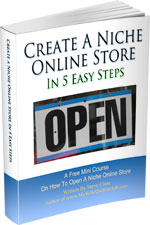
Ready To Get Serious About Starting An Online Business?
If you are really considering starting your own online business, then you have to check out my free mini course on How To Create A Niche Online Store In 5 Easy Steps.
In this 6 day mini course, I reveal the steps that my wife and I took to earn 100 thousand dollars in the span of just a year. Best of all, it's absolutely free!


